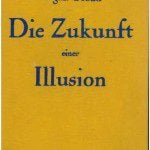
***
You might not be completely blown away by astonishment to learn that I wrote a Hawaiian-themed column for Meridian Magazine during the vacation that my wife and I recently took in in the islands. Other things that I did there will seldom be so instantly apparent, but it was, shall we say, a working vacation:
“The Surprising Latter-day Saint Connections in Hawaii”
***
Two new pieces went up today in Interpreter: A Journal of Latter-day Saint Faith and Scholarship. The first is a relatively brief summary of the second:
“Interpreting Interpreter: Structuring Nephi’s Record-Keeping,” by Kyler Rasmussen
This post is a summary of the article “Nephi’s Small Plates: A Rhetorical Analysis” by Noel B. Reynolds in Volume 50 of Interpreter: A Journal of Latter-day Saint Faith and Scholarship.
The full article can be read at https://interpreterfoundation.org/nephis-small-plates-a-rhetorical-analysis/.
An introduction to the Interpreting Interpreter series is available at https://interpreterfoundation.org/interpreting-interpreter-on-abstracting-thought/.
The Takeaway: Reynolds identifies seven passages in 1 and 2 Nephi where the book’s authors provide their own explanations for the nature and purpose of that record. These passages appear to have been intricately and intentionally crafted using the techniques of Hebrew poetry and rhetoric, suggesting that the Small Plates are the result of an extensive and careful process of composition that occurred prior to being etched on metal plates.
And here is the article itself:
“Nephi’s Small Plates: A Rhetorical Analysis,” by Noel B. Reynolds
Abstract: In previous and pending publications I have proposed interpretations of various features of Nephi’s writings. In this paper I undertake a comprehensive discussion of the seven passages in which Nephi and his successor Jacob explain the difference between the large and the small plates and describe the divinely mandated profile for each. While most readers of the Book of Mormon have been satisfied with the simple distinction between the large plates in which the large plates are a comprehensive historical record of the Nephite experience and the small plates are a record of selected spiritual experiences, including revelations and prophecies, that approach has been challenged in some academic writing. What has been missing in this literature is a comprehensive and focused analysis of all seven of the textual profiles for these two Nephite records. In the following analysis, I invoke the insights of Hebrew rhetoric as developed by Hebrew Bible scholars over the past half century to articulate a vision of how these scattered explanations are designed and placed to support the larger rhetorical structures Nephi has built into his two books. The conclusions reached support the traditional approach to these texts.
We at the Interpreter Foundation wish you a wonderful weekend, and we hope that you might enjoy and even benefit from one or both of these articles.
***
Whatever else one thinks of Israel, whatever one’s politics, Mark Twain asks a marvelous question, one that is worthy of reflection:
“If statistics are right, the Jews constitute but one percent of the human race. It suggests a nebulous dim puff of stardust lost in the blaze of the Milky Way. Properly, the Jew ought hardly to be heard of, but he is heard of, has always been heard of. He is as prominent on the planet as any other people, and his commercial importance is extravagantly out of proportion to the smallness of his bulk. His contributions to the world’s list of great names in literature, science, art, music, finance, medicine, and abstruse learning are also away out of proportion to the weakness of his numbers. He has made a marvelous fight in this world, in all the ages; and has done it with his hands tied behind him. He could be vain of himself, and be excused for it.
“The Egyptian, the Babylonian, and the Persian rose, filled the planet with sound and splendor, then faded to dream-stuff and passed away; the Greek and the Roman followed; and made a vast noise, and they are gone; other people have sprung up and held their torch high for a time, but it burned out, and they sit in twilight now, or have vanished. The Jew saw them all, beat them all, and is now what he always was, exhibiting no decadence, no infirmities of age, no weakening of his parts, no slowing of his energies, no dulling of his alert and aggressive mind. All things are mortal but the Jew; all other forces pass, but he remains. What is the secret of his immortality?”
A believer, I think, might justifiably see something more than earthly here. And John Adams is worth a hearing on the matter, as well:
“I will insist the Hebrews have [contributed] more to civilize men than any other nation. If I was an atheist and believed in blind eternal fate, I should still believe that fate had ordained the Jews to be the most essential instrument for civilizing the nations . . . They are the most glorious nation that ever inhabited this Earth. The Romans and their empire were but a bubble in comparison to the Jews.”
Please note that both John Adams and Mark Twain wrote well before the enormous Jewish contributions to science, literature, commerce, and the arts, far out of proportion to their numbers, and, yes, well before the horrors of the Nazi Holocaust. Try to imagine the literary, artistic, economic, and scientific riches that we lost in the death camps of the Third Reich, to say nothing of the sheer basic human cost of the so-called Final Solution.
***
Here’s a bloodcurdling obscenity that I’ve selected for your indignation from the Christopher Hitchens Memorial “How Religion Poisons Everything” File©. Before reading it, you should probably ask your children to go out of the room, along with people above the age of seventy-five, those suffering from heart conditions, and pregnant women:
Share it only with people who are in solidly good health, both physically and emotionally.
Posted from St. George, Utah












